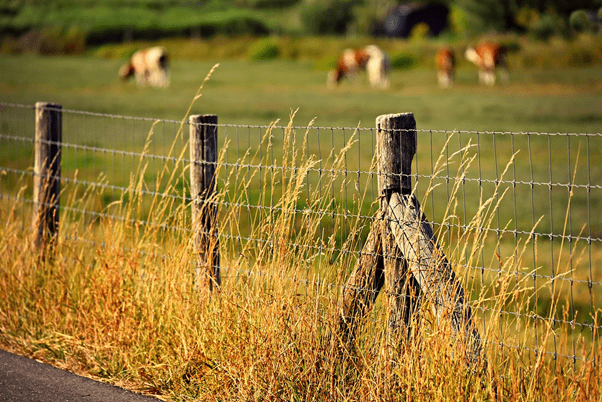Wire fencing is perfect for farming. It keeps predators out and livestock in, plus it’s relatively cost-effective by comparison to other materials. However, wire fencing is notoriously difficult to set up because it’s so fiddly and improper installation can lead to your fencing becoming largely ineffective. It must stand tall and strong to keep livestock from bowling it over and breaking out. So, how exactly does one go about installing wire fencing for their farm? We’re here to answer this question by looking at everything you need to make the process as easy and effective as possible. Read on to find out for yourself.
Netting and Posts
First things first, you need to ensure you’re buying the right wire fencing for the livestock you plan on containing. For example, hexagonal wire netting is ideal for smaller farmyard animals, such as chickens, rabbits and pheasants. It’s surface is not harmful and it keeps your livestock safe and other vermin out. Meanwhile, barbed wire is typically used as a top line for larger livestock, like cattle, sheep and goats. This provides an added layer of security, too. You also need treated wood or steel posts to support the whole structure. Choose wisely because this is what makes or breaks your wire fencing.
Tensioning Tools
Tensioning is what makes wire fences as robust as other materials. It’s important to remember to make the wire as taut as possible when you install it, to ensure the strength and security of your fencing. Therefore, you need the right tools. These include boundary clamps, gripple wire joiners, gripple T-clips and a gripple tensioning tool. With this equipment, you can apply an even and high amount of tension across your fencing.
Wire Dispenser
As we mentioned before, wire fencing is incredibly fiddly. Even if you’re careful, it tends to coil, tangle and jam. This makes installing a wire fence more difficult than it should be. However, there is a simple solution – using a wire dispenser. These make it easy to carry the wire around, plus help prevent twisting and jamming. Or you can check cedarmountainfence.com to see other fencing options for your property.
Cutting and Joining
When installing your wire fencing, you’ll need tools for cutting and joining the various components. These will help make the job a lot easier. As such, you should invest in equipment like expert wire cutters, multi-fence pliers, lever end cutting nippers and crimp sleeves. By doing the job properly, you can also ensure your wire fencing is to the highest standard of security and strength.
Striking
You’ll also need striking equipment for the posts of your wire fencing. Posts must be solidly embedded in the ground so the fence has a strong foundation that neither weather nor animals can bring down. Sledgehammers can do the trick, but for the perfect amount of force and precision, post-drivers should be your number one choice.
These are the essentials to installing a sturdy wire fence for your farm. It’s important to not take shortcuts or the cheaper option because the quality of your wire fencing will suffer otherwise. You want to ensure your livestock are the safest they can be.

